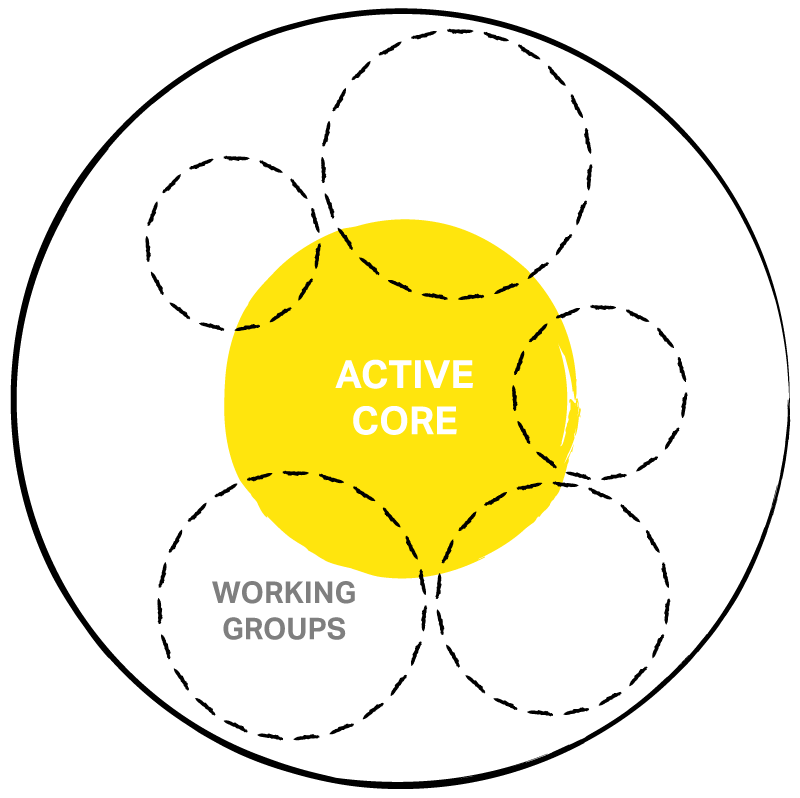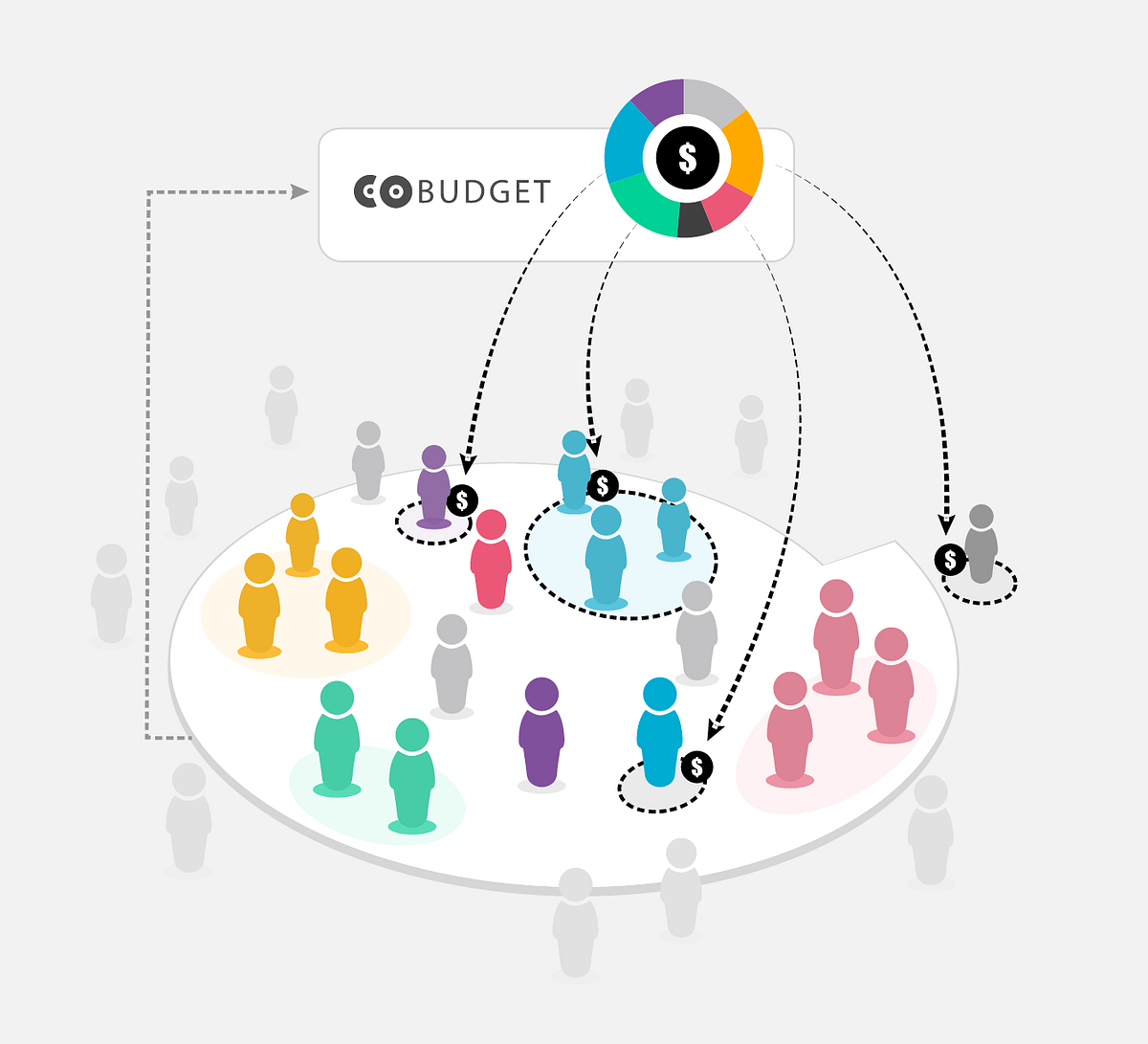By Chloe Waretini and originally published on medium.com
It’s a core question of our time — how we can create positive (as opposed to coercive) power structures that empower the broadest range of people to work powerfully on what matters to them — meeting the urgent challenges of the 21st Century.
We know that the centralized authority structures which were very effective in past centuries are now often obstacles to the change we want to effect. They inhibit creativity and innovation, leave large numbers of people disengaged, and can perpetuate systems of inequality.
But what is the alternative? Experiments in ‘leaderless’ or ‘horizontal’ organizations have been mushrooming in recent years and yet many of them end up creating power structures that can be even more problematic than those of conventional organizations.
In the absence of formal hierarchies, informal and often invisible ones spring up in their place. Hierarchies of status, influence, and information that are incredibly difficult to challenge because they’re implicit [Read : Beware the tyranny of structurelessness].
High status tends to accumulate in people who :
- Are called founders, leaders, elders, visionaries (positive labels)
- Hold a large number of relationships (high social capital)
- Express themselves quickly and with conviction (the loudest voices)
See this Deep Democracy article on Rank and Economy for a deeper dive.
In the past few years I’ve been learning through experimentation in many project and organizations (including Enspiral, Ōtākaro Orchard project, and Percolab) of mechanisms to create authentic collective ownership and systems to grow shared leadership.
Below are five strategies to organize for empowerment :
- Centralizing a mechanism for decentralizing leadership
- Growing community — balancing openness and boundaries
- Creating a shared resource economy
- Working out loud — transparency of information and opportunity
- Growing leadership — critical conversations about status and power
1. Centralizing a mechanism for decentralizing leadership
This might sound counter-intuitive, or even downright antithetical, but the most effective way I’ve found to spread leadership is to make it the explicit job of a small number of high status people (i.e. the people who power will centralize to unchecked). In Enspiral we call these people Catalysts. They’re people we trust to use their power and status to grow the number of leaders in the organization in a way that maintains the integrity of the whole.
Their role includes sense-making (maintaining coherence in the community and directing attention), helping Working Groups to form, holding accountability for what people commit to, issuing invitations to take acts of leadership, connecting people across the network and maintaining organizational rhythms e.g. 2-week sprints.
A Catalyst is not a position of authority (they can’t order anyone to do anything), but instead a high-status curatorial role. This explicit high status creates a funnel for people’s attention which enables clarity amongst decentralization. Without explicit high-status roles in organizations or projects, organizational fuzziness and ambiguity can eat up a lot of energy.
Caution : It takes high integrity and self-awareness to enact this kind of ecosystem stewardship, keeping the agenda in service of the whole rather than reverting to personal preferences and pet projects. At Enspiral each of our Catalysts are supported by three stewards to help them grow this consciousness, shine a light on blindspots and understand where their biases may be creeping in.
2. Growing community — balancing openness and boundaries
A vibrant and productive community balances openness, diversity and inclusion with clear boundaries. A community that is too open becomes fragmented, incoherent and trust dissolves. A community that is too closed becomes cliqey, less intelligent and perpetuates systems of marginalization.

A metaphor that can be useful in envisaging a healthy structure of your community is a fried egg (thanks Alex Ryan). You want a very active, high-trust core where relationships are close enough to have relatively frictionless stewardship and production and secure enough to weather the tough conversations. This core is surrounded by a greater area of less committed stakeholders.
In Enspiral these two layers are called Members (yolk) and Contributors (white). Crossing these two zones are Working Groups which form around needs and opportunities the community has e.g. creating knowledge products, doing organizational improvements like diversity and inclusion.
This structure enables people to participate at the commitment level which best suits their needs — from being an occasional collaborator to being committed full time.
At Enspiral the boundaries of the community are defined by trust. Anyone in the high-trust active core can independently invite anyone they trust into the wider network. To be admitted into the core, all the core members need to pass a decision by consensus.
Almost all the action that happens is visible to the whole and available for them to participate and have a say in. The close core acts both as a safer, more intimate space for tough conversations and has extra decision-making privileges that match the higher level of commitment and strategic oversight which comes with that.
These privileges can include being able to invite new members to the community, and making decisions on resource distribution. Because of these extra privileges, it is important to have explicit pathways and criteria for members in the wider community to graduate to the core. Without these the core can become like an exclusive club.
Caution : Although trust is a great way to structure a community which can share leadership, it’s important to have checks and balances to ensure you’re not perpetuating the marginalization of peoples. Having a working group actively addressing barriers to diversity and inviting in the leadership of different kinds of people can help mitigate this effect.
3. Creating a shared resource economy
A shared resource economy is essential for any community to thrive. Resources can include volunteer time, in-kind contributions and pro-bono professional support. However for a community to remain productive and healthy, it’s beneficial if financial resources are there as well.

Usually financial resources (aka our budgets) remain behind closed doors. A small subset of the organization make opaque decisions about how it gets allocated and spent. This centralizes power in a very strong way and disables great ideas by lower status members of the community from becoming visible and getting resourced.
At Enspiral we solved this problem by developing Cobudget —a tool that makes resource allocation participatory. Any member of the community can make and discuss proposals for funding and people who have contributed money to the community, or who have a share of a collective pot, can invest their internal currency on ideas they’d like to see happen.
Using Cobudget to distribute leadership
Imagine if you had a network or community you were starting up and you had a funder contribute 1.5 Full Time Equivalent salary for operating the network. You might spend a third of that on employing a convenor who would set up and operate the organizational infrastructure, then have the other two thirds available for allocation through Cobudget — perhaps giving each person in the active core a share to start, then as your income diversifies you could either grow the core or start also devolving parts of the budget to working groups to decide how to spend in this transparent way.
Caution : With this internal crowdfunding system there is a risk that novelty projects e.g. t-shirts or events are more popular than more strategic ones like co-creating a Code of Conduct. At Enspiral the Catalysts help strategically curate what gets funded by having the permission to move proposals from the Ideas to the Funding stage. This helps ensure vital projects get resourced, not just the sexy ones.
4. Working out loud — transparency of information and opportunity
One of the ways agency and leadership often gets concentrated is through important conversations that happen behind closed doors. Working out loud is a strategy to combat this.
Though it might seem a hassle to document your conversations, having the awareness to think critically about whether a conversation you’ve had is beneficial for others to know about — especially if you’re looking to start an initiative people might want to contribute to. As well as using Cobudget, there are four key ways Enspiral works out-loud that create transparency of opportunity :
- Enspiral Handbook — our central ‘source of truth’ for the community, documenting agreements, processes, working groups and more. It’s kept updated by our Ops team and Catalysts.
- Enspiral Improvements board — this documents all the things community members are working on to improve our organization and allows other people to join in. Note that Celebrate is an important part of our workflow!
- Decisions and critical discussions on Loomio — we built Loomio to decentralize decision-making and now it’s the place where we have all our critical conversations and calls to action including consensus decisions, dot-votes, polls and scheduling.
- Progress videos — Catalysts record their sprint meetings on Zoom and publish them on youtube for the community (and the world!) to see.
We also use Slack for informal text-based communication. MatterMost is an Open Source alternative other groups like Holo are beginning to use which also allows you to have multiple privacy levels so you can have some chat spaces accessible to the public and others private to your team.
Caution : Using lots of new tools can be overwhelming for people and fragment a community even when you’ve had the best intentions to connect them. It’s important to use the fewest number of tools possible for the level of complexity of what you’re looking to do together and increase the number slowly over time as pain-points are collectively sensed and identified.
5. Growing leadership — critical conversations about status and power
This is where it gets really juicy, and where a lot of groups don’t dare venture. As Enspiral Member Richard D. Bartlett says in his article The Beautiful Trap of Belonging :
“Status comes pre-installed with anti-tamper devices: talking about status is taboo. If you want to reveal this taboo, try having a conversation about your own status in a group and you’ll see what I mean.”
However if we’re serious about empowering others it means being able to have tough conversations about the terrain of status in our communities and actively experimenting to learn how to keep it moving around, rather than stockpiling in one or two individuals.
This is a critical function required of the core. In this high trust space we can sensitively challenge each other to our status, as well as the power and privileges that come with it. From this place we can embody it, feel it, use it and notice how it impacts other people.
With conscious awareness, we can use our privilege and status to create more equity in our communities and the world. Without this function we’ll only get trapped in our cultured defaults that have created the unequal state of the world.
Caution : These conversations can be challenging for high-status individuals who hold strong values of decentralized leadership. I remember the first times people pointed out how my intentions of empowering others were having the opposite effect were incredibly confronting and I needed time and space to be truly willing to address my blindspots. Be sensitive rather than accusatory. Affirm the good intentions of the person while you point out their impacts that don’t match. Be humble enough to recognize all of us are on a learning journey towards doing this adequately.
Keeping the door open
This article documents my learnings and perspectives on organizing for empowerment. It is by no means a comprehensive or complete guide. Please feel free to comment [at the original post] with your thoughts and resources so we can continue to develop this learning together!
Republished with permission of the author.
Featured Image/graphic link and some paragraph spacing added by Enlivening Edge Magazine.





Thank you for this great article! It’s quite inspiring to learn about your approaches and I feel empowered to move further with my organization, identifying certain elements we also implemented in our structures in a really organic, sensing manner.
All the best for the next steps on your journey!
Sophie